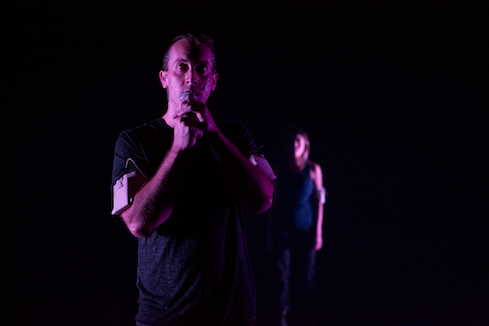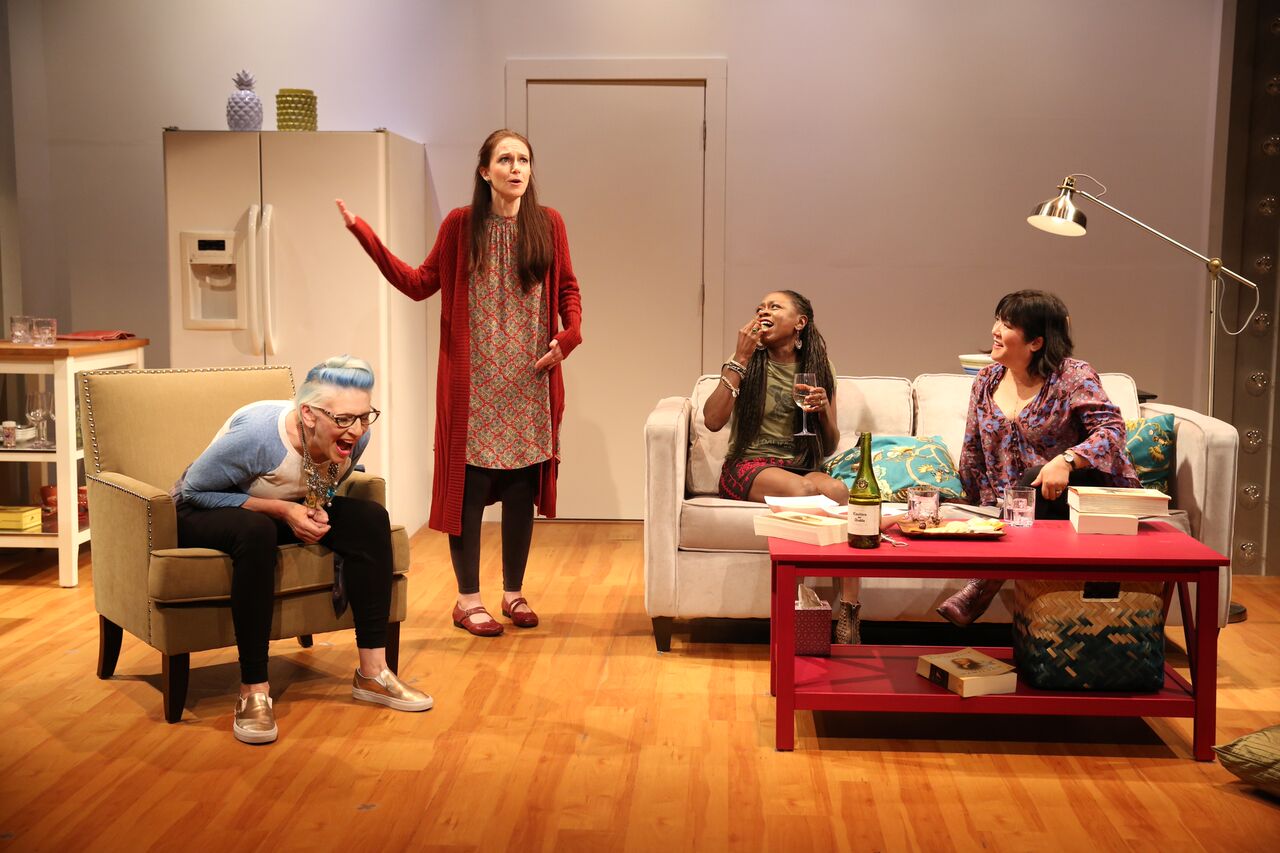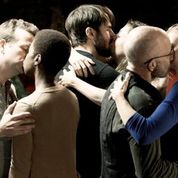by Carole Di Tosti
After created by Andrew Schneider in collaboration with Alessandra Calabi, Bobby McElver, Alicia Ayo Ohs, with Kedian Keohan and Peter Musante presents a wild ride into discovery, nihilism, torment, darkness and redundancy. After is part of Under the Radar Festival at The Public Theater.
Once viewing this presentation, for me the question remains. Is such a work which has at its core extended periods of darkness, i.e. light deprivation to tease and titillate the audience, a true dramatic entertainment? Is subjecting an audience beyond their will and expectations to an experiment into the random with little or no actual coherence intentionally pleasurable? Or is this work pretentious in obviating clear dramatic elements of conflict, arc of development and theme? Ultimately, one asks memorable or disposable?
Playwrights, audience members whether venerating classic or avant-garde theatrical spectacles, take note. After tilts the perspective of “drama” and turns it on its head. It is a techno presentation that might do well in its own created space other than a stage. The presentation raises questions about what is best and worst about the live arts. Indeed, it appears indulgent at a time when many issues of grave importance grace our national and international politic and perhaps works about such issues remain more relevant.
I wondered at the content of After, as I sat through the eighty minutes of periodic thunderous, crashing sounds, thirty pinpoints of light on stage that rose up intermittently, extended periods of darkness (one lasted around 10-15 minutes) and nano-second scenes of human interaction predominately portrayed by Andrew Schneider and Alicia Ayo Ohs. Ironically, these interchanges were not threaded together in any semblance of logic that moved or expressed emotional coherence.
However, if you enjoy experimental works that appear to be heading in no specific direction, with uncertain overarching themes, perhaps you will enjoy After. If anything, it boasts another perspective which is useful. What one may gain from that is entirely up to the audience member. Indeed, in a talk back, one of the originators of the presentation admitted that they weren’t really sure what dialogue in the presentation means. Does the audience make the meaning? Convenient but disingenuous.
The sensory deprivation though interesting became annoying and repetitive as did the blips of scenes on a bare stage with white flooring against a black backdrop when the lights flashed on. There were some props: a few chairs, a steel grey rollaway bin with a top that simulated a desk for a few dialogue interchanges. In one of the opening blips a person discusses the brain. Later in darkness, commentary is given to the effect that all things end. The vacuum of space and death is suggested. The canard that our experiences are the same is presumptuous.
In the talk back, Schneider discussed his interest in research into various studies of the brain, sensory deprivation and neurological responses to various stimuli. He did not venture near the more controversial research that the mind and consciousness produce the brain. As of yet, researchers wobble in their attempts to understand what the mind is. Indeed, there is a growing body of writing and anecdotal testimony that suggests that the mind and consciousness are not produced by the brain. What then?
The presentation includes in a latter segment what happens when one’s last breath is taken. This is simulated in darkness with sounds of heavy breathing, slowing heart beats and commentary that suggests nothing exists “after” death. I thought the tenor of what was being suggested about sensory deprivation and death was hackneyed. I also thought it humorous that I was being used as a quantum guinea pig to inculcate whatever random concepts were presented as profound meta-thought.
Though appearing to be incredibly innovative, experimental in random and intermittent use of lights, strobes and state of the art sound technology, the presentation became redundant. The work suffers housed in the dramatic fourth wall structure. Eventually, the effects gained an inherent sameness, draining wonder and interest. Perhaps the added dimension elucidating the mind’s place in this mélange of sensory experiences may have created a fascination which was sorely lacking after the first half hour of repetitive darkness, pinpoints of light, directionless dialogue and crashing roils of thunder that sounded like jets revving up their engines.
Bravo to the technological innovation and the team responsible for After.
The production runs with no intermission (80 minutes) at the Public Theater until 14 January. The location is 425 Lafayette (Astor’s Place). Access tickets at this site:
https://publictheater.org/Tickets/Calendar/PlayDetailsCollection/UTR-2018/After/
Photo Credit: Maria Baranova -Suzuki.
























